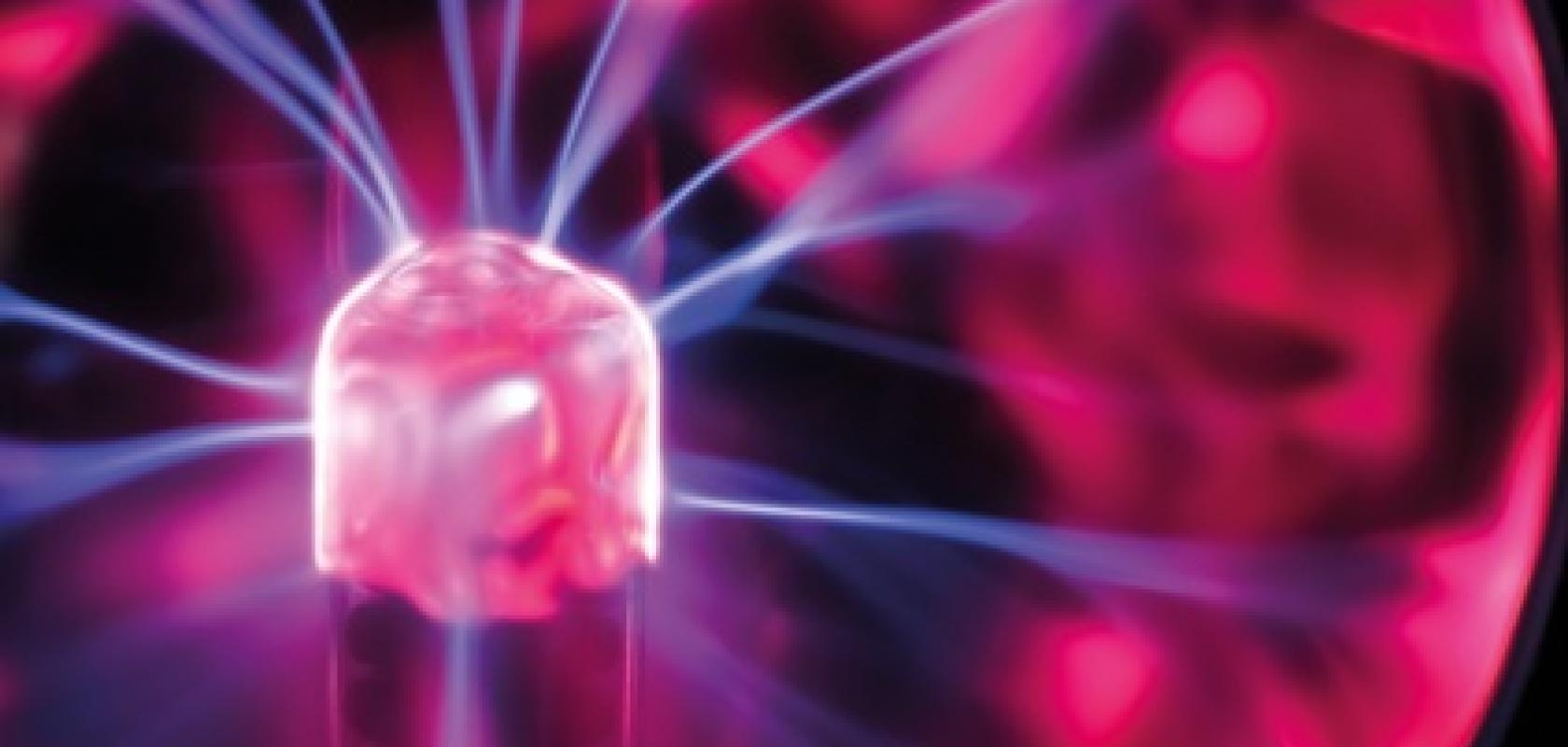Gemma Church explains how advances in modular high-resolution spectroscopy aids plasma monitoring
Forget solids, liquids and gasses. Plasma is one of the four fundamental states of matter and it’s a vital asset to the world of spectroscopy – where novel monitoring techniques are helping drive semiconductor production and other industries forward.
A plasma consists of a gas of charged particles, where a fraction of the atoms are excited or ionised to form free electrons and ions. As these charged particles return to their ground state, light is emitted at wavelengths specific to the atoms present in the plasma. By investigating the spectral profile of the emitted light, the composition of the plasma is determined.
The wavelengths of the emission lines are used to identify the elements present in the plasma, with emission line intensity used to quantify particle and electron densities in real time for process control.
Plasmas are ‘ideal for spectroscopic study,’ according to Oliver Lischtschenko, account manager research sales, at Ocean Insight. ‘Plasmas are relatively easy to control, they just need to be monitored and fed back. Typical control parameters are pressure, heating (often RF) power, and gas flow concentrations. The light emitted as a plasma cools is dependent on its chemical components.’
Plasma spectra are typically made up of high-resolution peaks, which provide a detailed fingerprint of the chemical composition and status of the plasma. ‘This ability to monitor the plasma as it changes is hugely valuable to many applications,’ Lischtschenko added.
The measurement setup required in a plasma monitoring application is also relatively simple, as Lischtschenko explained: ‘It is just a question of setting up a suitable collection optic to gather the light and deliver it to the spectrometer.
‘This can be as simple as an optical fibre looking through a window into the plasma chamber, to something involving combinations of lenses to establish the most effective field of view into the plasma. There are many software tools available to help with the real-time analysis of spectra as they are collected,’ Lischtschenko added.
Plasma is used in a range of industries, including semiconductor manufacturing, where the precise monitoring of plasma-based processes can help to minimise wafer contamination, improve wafer quality, and optimise production yields.
Plasma is also used for elemental analysis, film deposition, plasma etching and surface cleaning. Here, plasma monitoring via the emission spectrum measured for the plasma sample can provide detailed elemental analysis for the sample and enable determination of the critical plasma parameters required for controlling a plasma-based process.
However, challenges remain in the plasma monitoring space due to the instability of the plasma itself, as Lischtschenko explained: ‘Plasmas can change in microseconds. The plasma can potentially collapse and terminate the corresponding process.’
This is why spectroscopy is such an important tool to understand this state of matter. Neville Davies, Ocean Insight’s senior applications manager EMEA, said: ‘Spectroscopy is now a highly effective measurement tool for plasmas. Array spectrometers provide the speed of measurement, industrial robustness and integration options that are usually required.
‘Sometimes, low intensity plasmas present a challenge in terms of speed of measurement, but even that can be addressed by changing the entrance aperture of the spectrometer to a larger one, in order to capture more light,’ Davies added.
Modular set-ups
In particular, UV-Vis-NIR spectroscopy is a powerful method for measuring plasma emission to enable elemental analysis and precise control of plasma-based processes.
A flexible, modular set-up can be used to monitor the plasma, using a high-resolution spectrometer like the HR or Maya2000 Pro series spectrometers from Ocean Insight (where the latter has an excellent response for UV gases). Also, spectrometers and subsystems can be integrated into other devices and combined with machine learning tools for even more sophisticated control of plasma chamber conditions.
For the modular setup, an HR spectrometer is combined with a solarisation resistant fibre to measure the plasma’s qualitative emission data as it forms in a plasma chamber. If quantitative measurements are required, users can add a spectral library and compare data to quickly identify unknown emission lines, bands and peaks.
Ocean Insight revealed in a recent whitepaper how an Ocean Insight HR series high-resolution spectrometer was used to monitor changes in argon plasma emission, after the introduction of different gases to a plasma chamber.
Lischtschenko said: ‘Ocean Insight spectrometers are ideally suited to this type of monitoring, ultimately improving the consistency of plasma processes and improving efficiency. For our customers, this saves time, improves quality and provides a higher level of control.’
The whitepaper reveals the power of modular spectroscopy for plasma monitoring, where the HR2000+ high-resolution spectrometer is used with a modular spectroscopy approach to measure the plasma emission spectra through the window of a plasma chamber, as chamber conditions are changed.
The argon emission spectrum revealed in the whitepaper’s results is a great example of the rich spectral data measured for plasma emission. Using this spectral information, critical parameters can be determined for monitoring and controlling a plasma-based process during applications such as semiconductor fabrication.
As part of this study, hydrogen gas was also added to the argon plasma, and the subsequent changes in the plasma properties were measured using this set-up in real time. The spectral changes were then observed and could be modified to optimise the properties of the argon plasma through the addition of the hydrogen gas.
Ocean Insight is continuing to innovate in the plasma monitoring space, with additional plasma monitoring options available. Lischtschenko said: ‘We are constantly innovating new spectrometers and enhancing existing ones, as well as developing new software platforms. Recent advances in high speed monitoring, increased preconfigured spectrometer range with second order handling, and new SDK (Software Development Kit) development would all potentially be of interest.’


